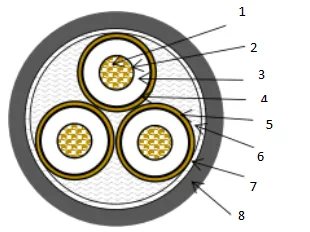10 月 . 22, 2024 10:09 Back to list
Understanding Foot Check Valves and Their Applications in Fluid Systems
Understanding Foot Check Valves Essential Components in Fluid Systems
In various industries, the efficiency and reliability of fluid systems are crucial for operational success. Among the many components that contribute to this efficiency, the foot check valve plays a significant role. This article explores what foot check valves are, their principles of operation, applications, and advantages.
What is a Foot Check Valve?
A foot check valve is a type of one-way valve that is installed at the bottom of a vertical pipe. Its primary purpose is to prevent backflow in a pumping system while allowing water or other fluids to flow in one direction. Typically, these valves are used in applications where the pump is positioned above the supply source, such as in well pumping systems or in water supply lines. The term foot comes from its common installation at the base or foot of a vertical pipeline.
Principles of Operation
Foot check valves operate on a simple principle they allow fluid to flow through in one direction only. This is achieved through a movable disc or flap that opens when the pressure from the fluid flow exceeds a certain threshold. When the flow stops or attempts to reverse, gravity or a spring mechanism closes the disc, thereby sealing the valve and preventing backflow.
The design of foot check valves usually involves a strainer or filter feature that protects the internal components from debris and clogging
. This is critical in maintaining the valve's functionality and extending its lifespan.foot check valve

Applications
Foot check valves are utilized across various applications, including
1. Water Supply Systems They are frequently used in well pumps, helping to retain water in the suction line and preventing the pump from losing prime. 2. Irrigation Systems In agricultural settings, foot check valves help maintain the flow of water and prevent contamination from backflow. 3. Fire Protection Systems Used in fire hydrants and sprinkler systems, these valves ensure water is readily available during emergencies while preventing contamination. 4. Industrial Applications In manufacturing and processing industries, foot check valves are essential for various fluid management tasks, including chemical processing.
Advantages of Foot Check Valves
1. Prevention of Backflow The primary advantage of foot check valves is their ability to prevent backflow, which can lead to contamination or loss of prime in pumps. 2. Easy Installation These valves are straightforward to install and maintain, making them convenient for many applications. 3. Durability Made from materials like brass, stainless steel, or PVC, foot check valves can withstand harsh conditions, including temperature fluctuations and exposure to corrosive fluids. 4. Cost-Effectiveness Given their vital role in preventing costly downtimes and maintenance issues, foot check valves are a cost-effective addition to any fluid system.
Conclusion
Foot check valves are essential components in ensuring the smooth operation of various fluid systems. Their ability to prevent backflow not only protects equipment from damage and contamination but also enhances the overall efficiency of fluid transport in critical applications. As industries continue to evolve and seek ways to optimize their processes, the role of foot check valves will remain significant. Understanding their function, applications, and advantages will aid professionals in selecting the right components for their specific needs—ultimately contributing to successful fluid management strategies.
Share
-
Understanding the Differences Between Wafer Type Butterfly Valve and Lugged Butterfly ValveNewsOct.25,2024
-
The Efficiency of Wafer Type Butterfly Valve and Lugged Butterfly ValveNewsOct.25,2024
-
The Ultimate Guide to Industrial Swing Check Valve: Performance, Installation, and MaintenanceNewsOct.25,2024
-
Superior Performance with Industrial Swing Check Valve: The Essential Valve for Any SystemNewsOct.25,2024
-
Industrial Swing Check Valve: The Ideal Solution for Flow ControlNewsOct.25,2024
-
You Need to Know About Industrial Swing Check Valve: Functionality, Scope, and PerformanceNewsOct.25,2024